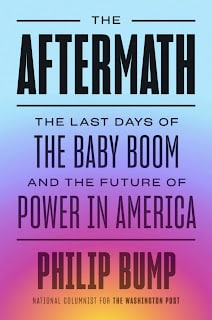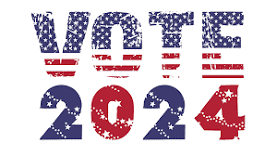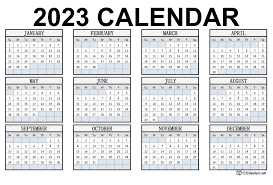We of the « Baby Boom » generation have more or less always taken it for granted that we would be at the center of society’s attention – and in recent decades at least the holders of most of the power in American society. That is largely still true, but changing. Hence, this latest book on Boomers and their power, The Aftermath: The Last Days of the Baby Boom and the Future of Power in America (Viking, 2023), by Philip Bump, a national columnist for The Washington Post. As the author observes about us boomers: « They opened their eyes and everyone around them was working to meet their exceptional needs. »
In case anyone doesn’t already know, the « baby boom » refers to the generation born in the aftermath of World War II, the great period of post-war prosperity from 1946 through 1964, when the annual average of births int he U.S. was around 4 million (compared with the 1930s average of 2.4 million). « In 1945, the year before the boom began, the population of the United States was about 140 million. Over the next 19 years, 76 million babies were born. »
Born in the most prosperous era in American history, we boomers have accumulated material wealth and all that goes with that. Obviously, individual boomers are rich, poor, and everywhere in between, but as a group we Have been wealthy and powerful. We are 23% of the population, but are 43% of the country’s homeowners, for example. « Since 1989, those aged 55 and older have always controlled at least 54 percent of the wealth in the country. By 2019, that figure was over 70 percent. »
We are also whiter than subsequent cohorts, which is due to the very specific circumstance of having been born in the period of U.S. history with little immigration, thanks to the restrictive legislation of 1924. My grandmother was an immigrant, as were several aunts and uncles, but no one I knew of my own generation.
What that means for the future, Bump shows, may be less straightforward than some have assumed.
Given the complex but hardly insignificant continued role of religion in our politics, it is noteworthy that while somewhat less religious than our predecessors, boomers are still significantly more so than those waiting to replace us. « The boomers were less inclined to embrace religious identifiers than their elders, yes, but they still embraced them. And they did and do so to a more robust degree than their own kids, over whom religious institutions have been wringing hands and for whom those institutions have been crafting appeals. » Indeed, it is still the case that « More boomers go to church one or more times a week than never go. »
Politically, boomers vote more and are overrepresented in Congress. We are also more likely to identify with one of the two political parties. « Boomers were more likely to be members of one of the parties, with 67 percent identifying as Democrats or Republicans. Among millennials, only 54 percent did so. » And it is significant that the only age group Trump won in 2016 « were those aged 50 and up—that is, the baby boomers and those older. »
Bump’s account is journalistically engaging. He interviews the person officially identified as the « first baby boomer » (born January 1, 1946), and he entertainingly rents a golf cart to explore around The Villages, the infamously enormous senior living community in Florida, some of whose residents call themselves « frogs, » since they are there until they « croak. »
On the other hand, he seems never to have met a number he didn’t appreciate, and the book is filled with an overwhelming number of charts and graphs (128 by one reader’s count). That’s probably information overload, but one can not look at the charts and just read the text and still get the message. There is, perhaps, too much of that (text) as well, as he seems determined to examine as much as he can about America’s changing landscape. At times, it feels that the book will never end, much as it must feel to many that the baby boomers’ presence and dominance will never end. But, of course, we will eventually end. And so does the book. In the process, he succeeds in providing the best on-offer analysis of the implications on the coming generational change in American politics.




